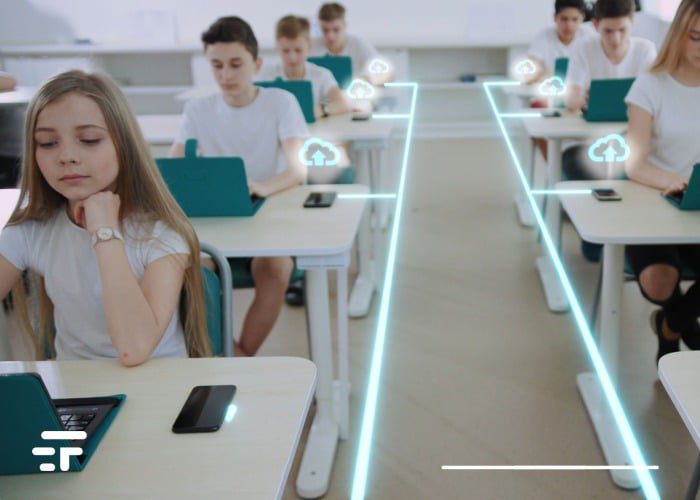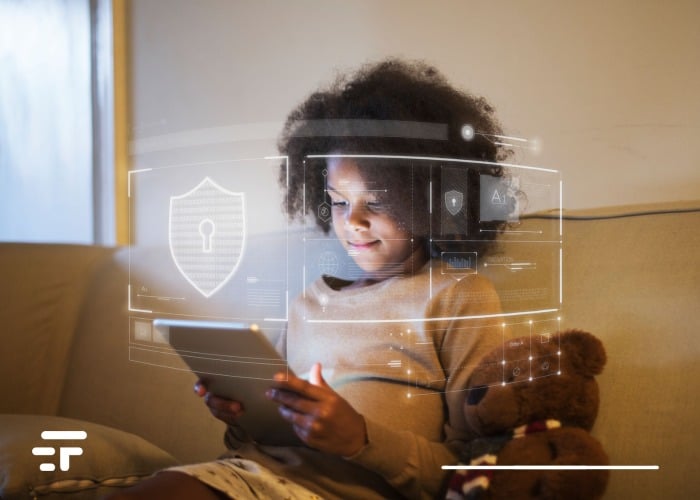Never before has our company forged such a strong bond with technology as in recent times. Forced to distance themselves and forced to give up our sociability, the only channel of contact with the world outside the walls of the house was the Internet.
Often, during the period of the lockdown and the pandemic, we wondered what it would have been like if we hadn't had the web and the technology at our disposal: would we have survived anyway? Probably yes, but one thing is certain: our relationship with the web has changed definitively and this also applies to the little ones. An example above all was the DAD, an acronym for distance learning.
Children have always proven a particular practicality with the use of the computer: a kind of intuitiveness that adults often struggle to have. For this reason, it is important to teach how to immediately establish the right relationship with the web: it is impossible for adults to always be present and constantly monitor the use of the network by the little ones.
So let's see what are the possible risks of the network for children and adolescents and how to stem them.
The risks of the web for children and minors

Cyber security is a serious matter, especially if those who enter the network are unable to protect themselves independently. It is therefore up to us to provide a safe and risk-free environment as far as possible.
Therefore, the tools used for network security, such as the internet vpn, not only must they be used constantly and on every device at hand, but they must also be strengthened with more specific behaviors to protect minors, who are increasingly attracted to the many educational and leisure activities.
In addition to study materials and recreational sites, the Internet can bring more:
- The use of social media, for example, is now common even for younger users, often unaware of the dangers they can bring. What content is posted? Which users are included in their circle of friends or followers? The use of fake profiles is much more frequent than imagined, and most of the time the purpose is not the best.
- Cyberbullying is another frequent threat. In a world dominated by popularity and under the constant eye of others, bullying is very common. The damage that this type of experience entails are often underestimated: leaving offensive or vulgar comments, spreading false news, creating fake accounts to mock or defame a teenager can have serious effects on the psyche of a young person (and not only).
- Attention also to prepaid cards, generally the most common way to allow children to shop online without having to use the bank cards of parents or other family members. The prepaid card is also a vehicle for scam, especially if you make purchases on sites that are unsafe or even constitute scams. But there is another danger behind the use of a card, namely identity theft, no less frequent for teenagers and children than for adults.
Digital education, not just at school
The latest figures speak for themselves: computer crimes against minors increased by 76%, also in conjunction with the massive use of the network for study purposes. How to behave then to protect children and adolescents from traps on the web?
- Use quality antiviruses that are effectively able to detect and block threats.
- Activate parental control software, i.e. able to block access to a certain series of dangerous sites, both for the quality of the content and for the potential risks that may derive from it.
- Pay attention to the use of passwords: in fact, these should be as difficult as possible to decrypt, avoiding making them coincide with dates of birth and personal names. They should also be changed frequently.
- Educating about digital security: Even if some topics are addressed in schools, this may not be enough. Talking at home about the risks that are run online in a simple and understandable way, involving small users and making them feel able to take control, is certainly essential to make them more attentive and responsible towards the risks they may incur.
- Always keep an eye on PCs and mobile devices. Even with all the various security measures taken, it can happen that a child unknowingly enters a highly dangerous site or accepts the friendship of an unknown user. Keeping the screens always in sight and taking a look every now and then is always a useful precaution.
- Set time limitations for online activity: whether it is a limit established based on time slots and time spent on the web, establishing a time limit serves to make browsing more controlled and also more aware.


